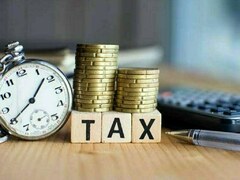April 2024 marked the 7th straight month of electricity generation going down year-on-year. Make it 19 out of the last 23 months where electricity generation has remained lower than a year ago. The 14 percent year-on-year decline in April 2024 generation is the highest since May 2023. Worse still this comes at the back of a low base where April 2023’s generation went down by a colossal 22.4 percent – which is still a record for a drop in monthly generation. April 2024 generation at 8.37 billion units is the lowest April reading (barring peak Covid quarter FY20) since April 2016.
For more context – April’s generation is lower than what was being generated in December of 2021 and January of 2022. The 12-month moving average has come down to 10.2 billion units, at a 36-month low. The graph looks scary and if this is not causing sleepless nights in Islamabad, nothing will. A large part of the demand destruction is from the domestic sector, which had dipped 11.3 percent, as per CPPA’s response to last month’s FCA hearing. The drop in industrial and commercial demand was much curtailed at 4.5 and 2.8 percent, respectively.

Surely, domestic consumers have their backs broken given the runaway inflation leading to reduced purchasing power, coupled with tariffs going through the roof in the past 18 to 20 months. But there are other factors at play here too. The much talked about rooftop solar has its fair share in these numbers. It is interesting that solar generation from IPPs stayed lower by 7 percent year-on-year to 787 million units with a 0.8 percent share in generation.

The reference Power Purchase Price (PPP) envisages 2.6 billion solar IPP-based generation at a capacity cost of Rs38.5 billion, which translates into a unit cost of Rs15. In the Jul-Apr 10-month period, IPP-based solar is estimated to have cost close to Rs40.8/share. Units purchased by discos via net metering are estimated at around 270 million by 10MFY24, which means the actual rooftop solar generation will be much higher. The distortions need to be looked into, and the model must change, for it puts those who don’t and can’t have rooftop solar – at a significant disadvantage and it will get worse by the day if the status quo continues.

Another massive deviation from reference PPP is that in imported coal-based generation. Economic merit order of dispatch means most of the imported coal fleet sits very low on the merit list, and only in exceptional cases where contractual obligations on imported coal are to be met, or some system load and reliability issues arise – are those plants operated. The capacity component of import-based coal plants is Rs387 billion for FY24. Only nuclear has a higher capacity charge component in absolute terms. The FY24 PPP was based on 16.5 billion units of generation from imported coal to keep the CPP at a reasonable Rs23.3/unit. In reality, the CPP by 10MFY24 had reached Rs97/unit – as a generation to date is only 3.3 billion units.
The FCA of Rs3.49/unit sought for the April 2024 generation merely becomes a footnote in the midst of such a royal mess. All this while, discos continue to shed load based on commercial decisions, in open violation of standard rules and procedures. The marginal cost of production for supplying electricity to even the highest loss areas is still in favor of an overall reduction in tariffs – as a number of low to no-fuel cost options are far from fully utilized. The long hours of load shedding just to cover up one’s incompetence and to buttress the numbers giving the impression of losses under control, is hurting both affordability and demand. This is a very concerning situation, and the response should be adequate.
























Comments